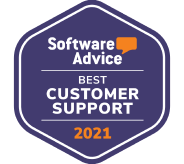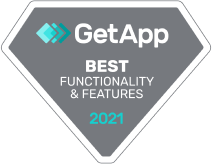In a hyper-competitive world, the key to business success is your ability to deliver excellent experiences and retain customers. How you listen to the voice of customers, understand customer issues, and resolve them makes all the difference in helping you stand out of the crowd. It’s absolutely true that customer experience is as important as your product or service. And to enhance your business offering, it is important to understand customers’ interests, inclinations, and expectations.
According to the Aberdeen Group, brands that implemented a structured VoC program to capture customer feedback and act on customer data insights generated a 10x greater yield in annual revenue.
Voice of Customer data benefits you as well as your customers – you through better client retention and customers through improved experience with your brand. Therefore, it’s important to set customer experience goals and design a VoC program that has the ability to transform the customer service landscape in your business.
A VoC program typically consists of three stages:
- Collection: Collecting customer and research data through surveys, polls, social channels, customer support calls, etc.
- Evaluation: Evaluating and analyzing responses from customers to create insightful reports.
- Implementation: Acting on the insights generated in the second stage and enhancing the business offering.
In this article, we will talk about the first and the most critical VoC stage ‘Collection’, and how customer data enriches the entire VoC program. Let’s get started.
Voice of Customer Methodologies to Capture Customer Data
1. Send VoC Surveys
Voice of Customer surveys have to be one of the most important methodologies of a VoC program. Surveys are a tool that allows businesses to directly ask customers what they want, need, prefer, and do not like. VoC surveys allow capturing customer data at various touchpoints, which helps create customer profiles, identify purchase tendencies, and discover what sells and why. There are three metrics to measure customer feedback:
NPS to Measure Loyalty: VoC surveys allow measuring the net promoter score (NPS) that tells you whether your customers would recommend your brand to others. With the help of NPS, you can:
- Get a birds-eye view of customer engagement and loyalty across various product or service lines.
- Highlight passive customers whose experiences could have been better and create opportunities to win their faith.
- Find detractors who shared strong negative feedback and figure out what went wrong.
CES to Measure Customer’s Perceived Effort: CES or customer effort score is a survey metric that measures the ease of customer interaction, service, and resolution with a business. CES surveys are sent after a customer’s interaction with a staff member or customer service executive to find out if they received helpful assistance, if their issue was resolved, or if their request was fulfilled.

Voice of Customer surveys is also an effective tool for market research. For example, a photo-sharing app company thinking of updating its product to a photo and video-sharing app can send surveys to its existing customer base and find out if the audience would be happy with the update. A practice like this can help businesses save time, money, and other resources.
2. Listen to Recorded Phone Calls
Whether they are customer support calls, demos, or sales calls, every conversation with your customers is important. In direct calls with the support team, customers tend to be more honest and vocal about the challenges they are experiencing. As a VoC manager, you can record all customer calls and analyze the vocabulary to tag each conversation with a human sentiment – satisfied, upset, angry, neutral, etc.
Customer calls give you direct access to people who are too happy with your brand, quite unhappy with your brand, or interested in your product/service. And engaging with these customers can help you identify and predict trends across customer requirements, challenges, and loyalty.
Extraction of detailed feedback and customer data from recorded customer calls can be a valuable contributor to your VoC program. And effective tools or technology can help dramatically in improving customer experience even as you go. For example, data through direct customer conversations can help in:
- Identifying staff training needs.
- Identifying customer complaint patterns and improving the first call resolution.
- Discovering what works best while servicing customers and replicating the best practices.
- Identifying trending customer challenges, and more.
3. Monitor Online Customer Reviews
93% of consumers say that their purchase is influenced by online reviews of the business or product. That’s why it is important to always be aware of what your customers are saying about you online.
Customers leave reviews when they are either too happy or too disappointed with your brand. Both kinds of reviews are helpful in understanding trends across customer loyalty and customer demands. So, make sure your business is verified on Google and also has a presence on social media.
These platforms will allow you to record feedback through Google My Business, social media posts, stories, reviews on pictures, direct messages, and mentions. Though this is an unorganized form of feedback, it can help you capture reliable data from a significant portion of your audience.
Once you collect reviews from various channels, here’s what you can do:
- Analyze negative reviews and resolve issues quickly so that your potential customers do not experience the same challenges while interacting with your brand.
- Respond to every comment, including negative reviews. Inform customers once their issue is resolved or apologize for the inconvenience.
- Post good reviews on your website and promote them on your socials as well.
- Include common complaints in internal training programs and create a scope of learning for everyone.
Online customer reviews have a huge role in gauging customer experience and improving business efforts. So, make sure to leverage all channels, such as Facebook, Linked In, G2, Capterra, TripAdvisor, Google My Business, HomeAdvisor, etc., as per your industry.
4. Collect Data Through Focus Groups
Focus group data is recorded through in-person communication with groups of customers. A moderator gathers a set of customers together and starts a free-flowing discussion. Each participant of the group can participate and freely voice their expectations and experiences.
Focus groups are a critical part of exploratory VoC research. Instead of only relying on metrics to make business decisions, it helps in understanding the general sentiment of customers with various viewpoints. This does not only answer the ‘what’ of your Voice of Customer program, but it also helps understand the ‘why.’
Some group members may talk about things you might not have thought about, for example, a budding demand for a new product. And most of the time, the two-way communication between customers helps draw out conclusions and solutions to the existing challenges.
Focus groups are also super helpful when you are anticipating an innovation or product update. You can gather the opinion of a sample of customers on a trial product and then decide to share the update with the entire customer base if the results are positive.
However, make sure that a focus group is only complementary to your comprehensive VoC strategy since it limits collecting opinions at a larger scale.
5. Conduct Customer Interviews
Customer interviews can help generate valuable input for VoC programs since they allow communicating with customers directly and understanding not just customer sentiment but also the reason behind it.
You can conduct ad-hoc interviews, target a particular segment of your customers, or interview a sample audience to get detailed feedback. Each way, you can conduct in-depth and personalized research.
One-on-one customer interviews should ideally be conducted right after customers’ interaction with your brand, whether on the site or via customer service phone calls. It helps collect the most accurate data since the experience is still fresh in customers’ minds.
You can also call customers with open complaint tickets to get a better understanding of the issue reported. This will not only help you understand customer expectations and experiences but will also help you deliver personalized experiences, resulting in improved customer relationships.
6. Listen Through Social Channels
Gone are the days when social media was just a networking channel. Today, all you need is a professional social media operator, and you can convert your social media platforms to business tools.
Platforms like Facebook, Instagram, Twitter, and LinkedIn have become the go-to places for customers to check out brands and their followers. An excellently written product description may fail to sell the product, but a positive review from an influential social media personality can close hundreds of sales within hours. Facebook advertising is a good option for promoting brands and you can also track the performance using Facebook ads reporting tools.
Similarly, one bad review can knock out several points from your brand image. Therefore, it’s important to listen to what people say about your brand on social media.
Social media helps you interact with your customers in a casual setting where they can be candid and blatantly honest about their opinions. And any form of feedback, as long as it is genuine, can never be bad. Moreover, social media is effortless to work with.
With a simple Facebook poll, you can learn what your customers prefer. And when we talk about social listening, we aren’t just referring to things people say about your brand; social listening also includes identifying market trends and gaining an edge to compete with other brands.
7. Collect Data Through Live Chat
Research shows that more than 41% of customers today expect live chat on websites because of the immediacy it provides. Live chat can be a super useful tool in collecting customer data and capturing thoughts while customers are interacting with your brand online.
By reviewing chat transcripts, VoC professionals can extract significant information, such as words or phrases used by customers. That information can then be categorized or tagged to draw customer trends and analyze customer expectations.
This information can further be used to fix prevailing issues, personalize customer experiences, send targeted sales emails, write effective marketing copy, and much more. For example, if several customers contact customer support through live chat and complaint about not being able to find a particular product, an underlying issue can be resolved – faulty website filters, in this case.
And the best part? Your customers do not need to leave everything to call or email you; they can talk to a customer service agent right away and leave only after shopping from your website.
But the benefits of live chat go beyond listening to the voice of customers. Live chat is an effective tool amongst all VoC methodologies since it is far less expensive than voice customer support. So, you might want to couple your voice process with live chat to cater to more customers while also reducing costs.
Live chat also helps in closing sales and even encouraging customers to increase their average order value. For example, a customer visiting your website to buy a laptop can be suggested to also buy a laptop sleeve and bag. Moreover, customer data retrieved from live chats help brands stay aware of customer needs and complaints, which is tremendously necessary to stay updated and competitive.

Zonka Feedback — Voice of Customer Survey Tool
Zonka VoC survey tool is a product of advanced technology, industry expertise, and an innovative survey approach. It’s a tailor-made platform that handles challenging businesses requirements at a small scale as well as enterprise level.
We have acquired customer experience expertise over the years and understood what helps in understanding the pulse of customers. This clearly reflects in our omnichannel Voice of Customer software that captures feedback at all touchpoints, including both online and offline interactions.
Our intelligent survey tool will enable you to build the most interesting surveys through templates and personalization, which can then be shared with customers via any medium you prefer (email, website, in-app, SMS, QR code scan, mobile, tablet, kiosk, etc.).
Further, automated reports and in-depth insights will help you make the right business decisions and excel customer experiences. Here are a few features of our vast VoC tool:
- Surveys and Microsurveys (NPS, CSAT, CSS, CES)
- Offline Survey Tool
- Customizable Survey Templates
- Reporting and Analysis Tool
- Real-time feedback
- Survey Logics
- White-Labeling and Branded Surveys, and much more
 Integrations
Integrations








-min-1.png)
.jpg)
.jpg)
-1.png)
.jpg)

















